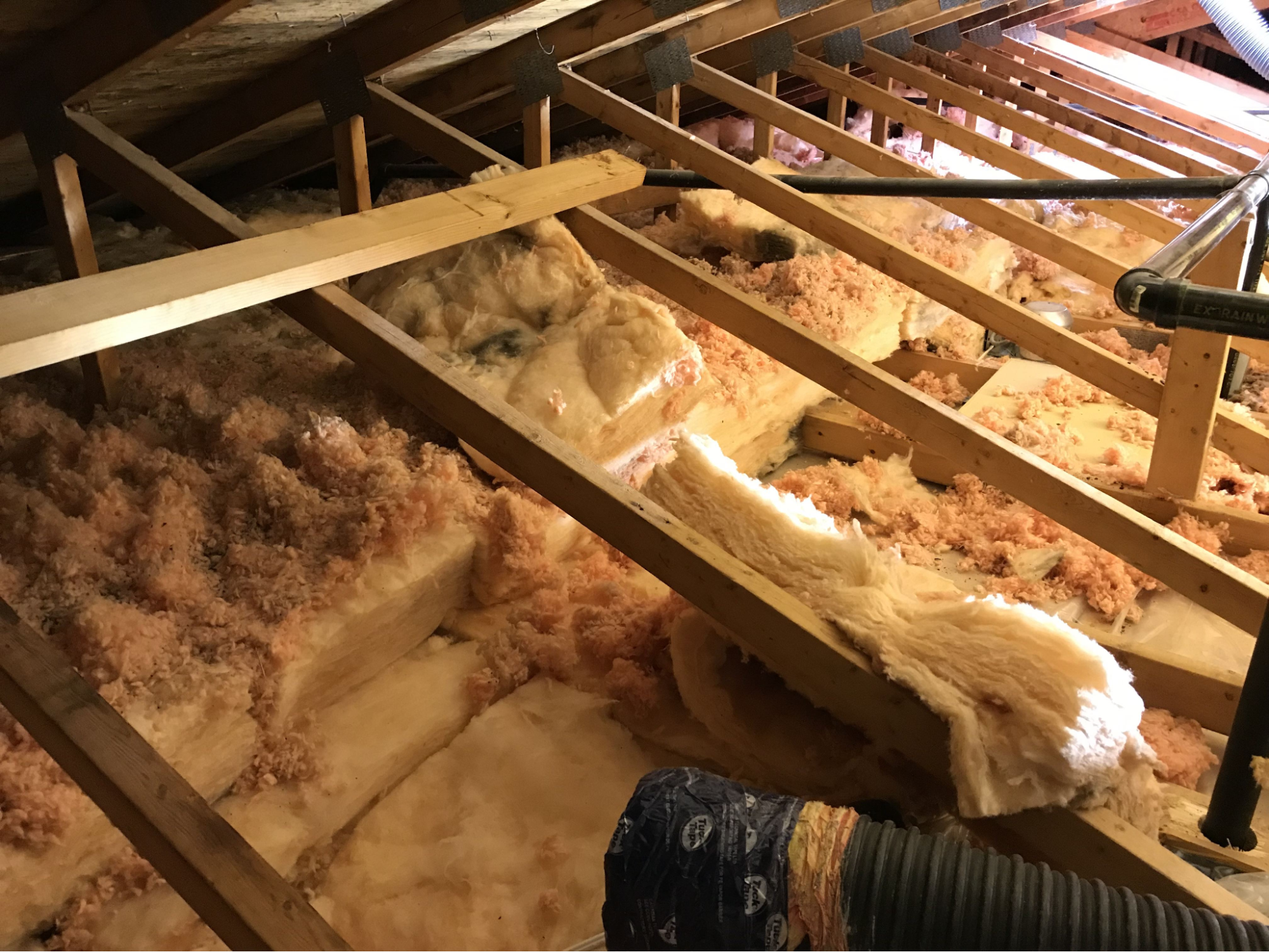
Home insulation plays a critical role in energy efficiency, indoor comfort, and utility costs. Whether in the attic, walls, or crawl space, insulation acts as a barrier to heat flow, helping to maintain consistent indoor temperatures. Over time, insulation degrades, becomes less effective, or accumulates contaminants, requiring removal before installing new material.
Old insulation often harbors mold, dust, rodent droppings, and allergens. These contaminants can impact indoor air quality, aggravate respiratory issues, and create an unhealthy living environment. Removing old material ensures the new insulation is installed in a clean, safe space.
New insulation must be installed in an environment free from obstructions to function optimally. Leaving old insulation in place can create inconsistencies in coverage, leading to gaps, moisture retention, and reduced thermal efficiency.
Damp or deteriorating insulation can contribute to wood rot and other structural issues in the attic or walls. Addressing these concerns during removal prevents further damage and ensures a solid foundation for new insulation.
A thorough inspection determines the condition of existing insulation, identifying contamination, moisture issues, and areas needing repairs.
Using industrial vacuum systems, trained technicians carefully remove old insulation while minimizing dust and airborne particles. Proper disposal follows local regulations to prevent environmental impact.
After removal, the area is cleaned and sanitized to eliminate mold, pest droppings, and any lingering contaminants. This preparation ensures the new insulation performs at peak efficiency.
Spray foam expands to fill cracks and gaps, offering superior air sealing, moisture resistance, and energy savings. It provides long-term performance and helps reduce heating and cooling costs.
While some homeowners attempt DIY insulation removal, professional services ensure safety, efficiency, and thorough cleanup. Professionals handle hazardous materials, prevent damage to surrounding structures, and install new insulation correctly for optimal results.
To maximize energy efficiency and comfort, removing old insulation is a crucial first step. Investing in professional removal and replacement ensures long-term performance and indoor air quality improvements.
If you’re considering upgrading your home’s insulation, iDAFOAM provides professional removal and installation services. Call (208) 806-3242 or email [email protected] to schedule an assessment.
In some cases, layering new insulation over old material is possible. However, if the existing insulation is damaged, contaminated, or uneven, removal is recommended for optimal performance.
Signs include visible damage, moisture issues, rodent infestations, high energy bills, and inconsistent indoor temperatures. A professional assessment can determine whether removal is necessary.
Professional insulation removal minimizes mess by using specialized vacuum systems and protective measures. Technicians ensure a thorough cleanup after extraction.
The process typically takes one to two days, depending on the size of the space and the condition of the existing insulation.
Yes, but only for a short period. Upgrading insulation promptly after removal restores and improves energy efficiency.
Spray foam offers the best energy efficiency due to its air-sealing properties, but fiberglass and blown-in insulation also provide significant benefits based on budget and installation needs.
Yes, rodent and pest infestations often require full removal and sanitization before new insulation is installed.
Costs vary based on factors such as home size, insulation type, and contamination level. Contact iDAFOAM for a detailed quote.
DIY removal is possible but not recommended due to health risks, disposal challenges, and the need for proper equipment.
After removal, address any structural or moisture issues, then install high-quality insulation to maximize energy savings and indoor comfort.